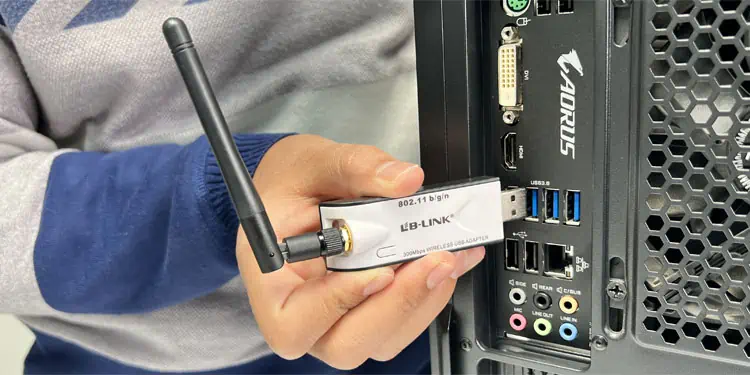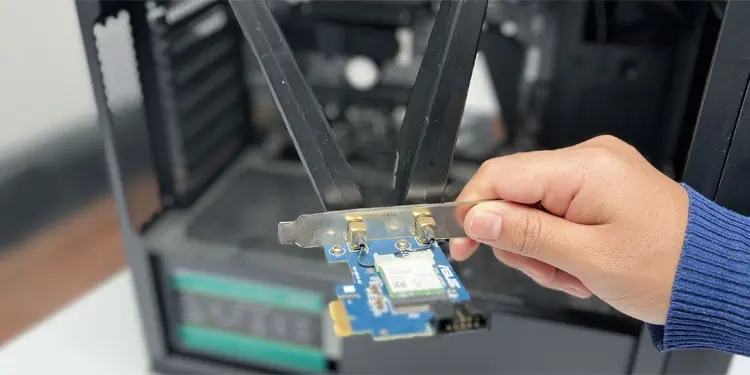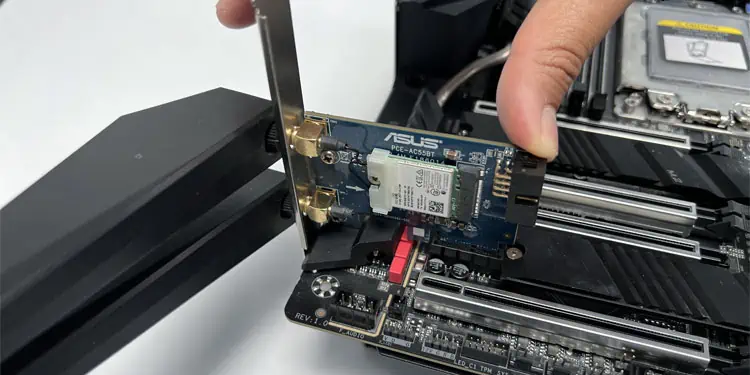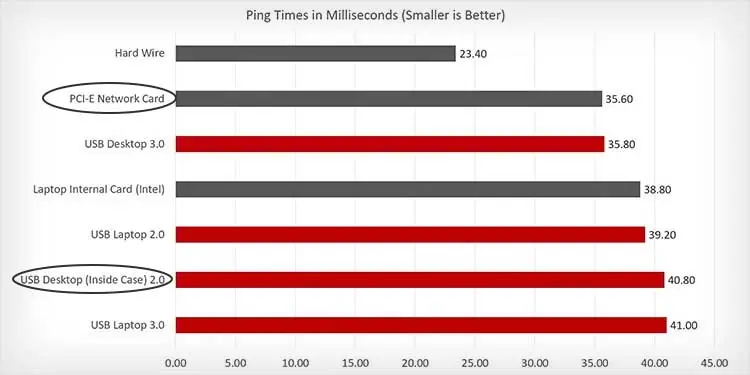Nowadays, many high-end motherboards come with built-in Wi-Fi modules. However, the older motherboards do not have such hardware components. So you will need to use an additional adapter if you want to get wireless capabilities on such devices.
Two types of Wi-Fi adapters are available on the market, USB and PCIe Wi-Fi adapters. Depending on the model, both types of adapters operate on different Wireless standards like Wi-Fi 5 (802.11ac), Wi-Fi 6 (802.11ax), and so on.
Apart from this, USB and PCIe adapters differ from each other in other features like speed, range, cost, etc. So how do you go about choosing the best one for your need, let’s find out!

What is USB Wi-Fi Adapter?
As the name suggests, USB Wi-Fi adapters are Wi-Fi adapters that you may connect to the external USB port on your computer. They are smaller in size and usually come with a single wireless antenna.
However, many other types of USB adapters are also available on the market. Some do not have any antenna, and some come with a larger or even more than one antenna. They also offer different specifications and data speeds.
For instance, if we considerTP-Link AC1300 USB 3.0 WiFi Adapter (Archer T3U), it operates on Dual Band 802.11ac and provides a connection speed of 400Mbps on 2.4GHz and 867Mbps on 5GHz Wi-Fi.

What is PCIe Wi-Fi Adapter?
PCIe Wi-Fi adapters are 1x PCIe wireless connectivity devices that you need to insert into the PCI express slot in the motherboard. Unlike USB adapters, these are internal devices.
They are slightly bulkier and generally contain two or more antennas. But you will also find PCIe adapters with one antenna or extendable wires/antennas in the market. Some PCIe adapters come with dedicated heat sinks to prevent overheating.
If we look at theTP-Link’s AX3000 (Archer TX55E), it operates on 802.11ax and provides 2402Mbps on 5GHz Wi-Fi and 574Mbps on 2.4GHz Wi-Fi.

How Are They Different?
When it comes to connecting to Wi-Fi, none of these adapters has a complete advantage over the other. The only difference is between performance—ping rate and internet speed and convenience—ease of installation as well as portability.
Since the PCIe Wi-Fi adapter goes into the PCIe slot on your motherboard, using the same PCIe adapter on multiple computers is not that convenient. It is because you’ll need toopen the casefor removing as well as adding this device.
you may easily carry a USB Wi-Fi adapter and then plug it into a free USB port on any computer to get Wi-Fi capabilities on that device. You can even use it on your laptop in case theinternal Wi-Fi module gets damaged.
